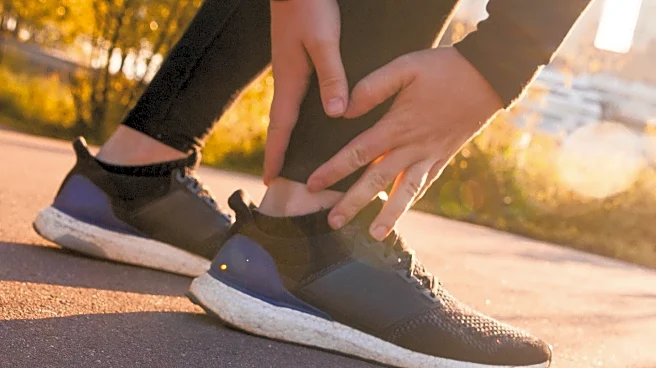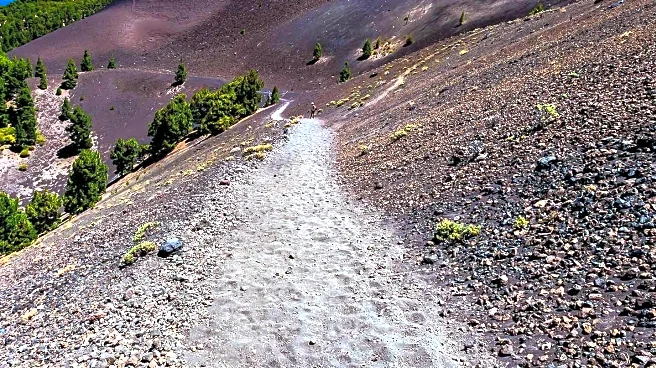What's Happening?
A recent hiking journey on the Pacific Crest Trail (PCT) has been marked by physical challenges and unique experiences. The hiker, dealing with ankle injuries and blisters, describes the difficulties faced during the trek, including painful walks and the need for frequent rest. Despite these challenges, the hiker encounters vibrant wildlife and fellow hikers, creating a sense of community and shared experience. The journey also highlights the importance of Leave No Trace (LNT) principles, as the hiker observes violations that could impact the environment. The narrative captures the essence of long-distance hiking, with its mix of physical endurance, natural beauty, and camaraderie among hikers.
Why It's Important?
This account underscores the physical demands and environmental considerations of long-distance hiking. The challenges faced by the hiker, such as injuries and environmental awareness, reflect broader issues in outdoor recreation. The emphasis on LNT principles highlights the need for responsible hiking practices to preserve natural landscapes. Additionally, the sense of community among hikers illustrates the social aspects of such journeys, fostering connections and shared experiences. This story is relevant to outdoor enthusiasts, environmental advocates, and those interested in the dynamics of long-distance hiking.
What's Next?
The hiker plans to rest and recover in Quincy, hoping to alleviate the ankle pain and continue the journey. This pause offers an opportunity to address physical ailments and prepare for the remaining trail. The narrative suggests that future hikes will continue to emphasize environmental responsibility and community engagement. As the hiker progresses, there may be further encounters with wildlife and fellow hikers, enriching the overall experience.
Beyond the Headlines
The story highlights the ethical dimension of hiking, particularly the importance of adhering to LNT principles to protect natural environments. It also touches on the cultural aspect of hiking, where shared experiences and mutual support among hikers create a unique subculture. The physical challenges faced by the hiker may prompt discussions on the importance of preparation and resilience in outdoor activities.













